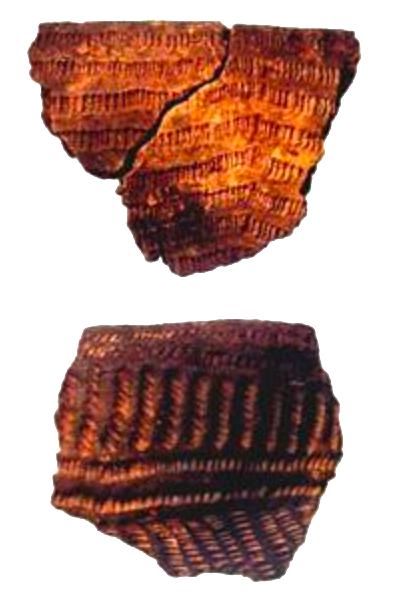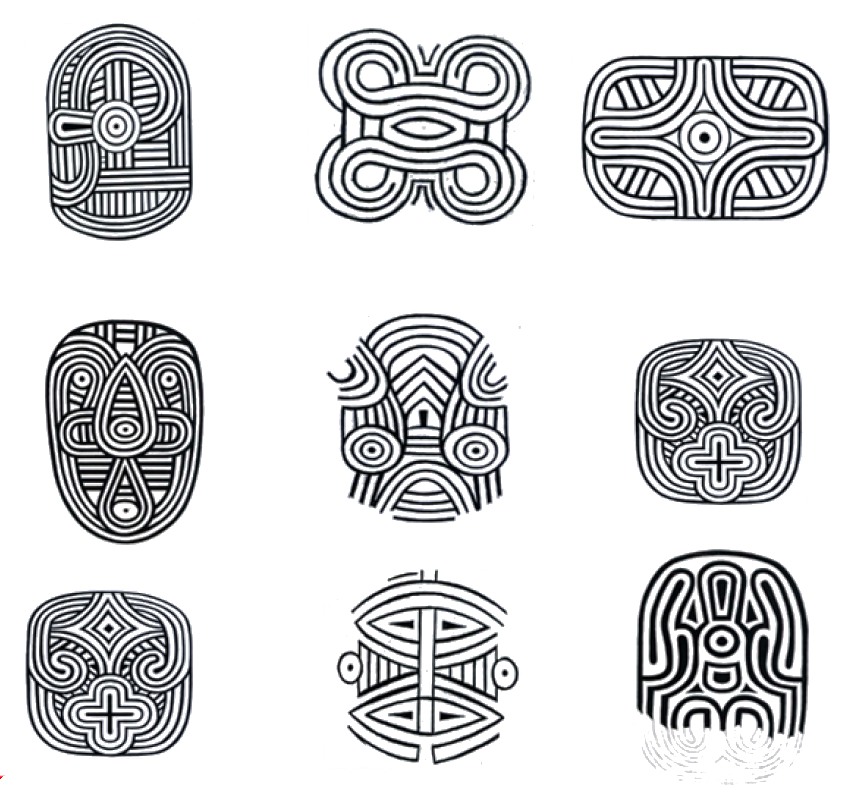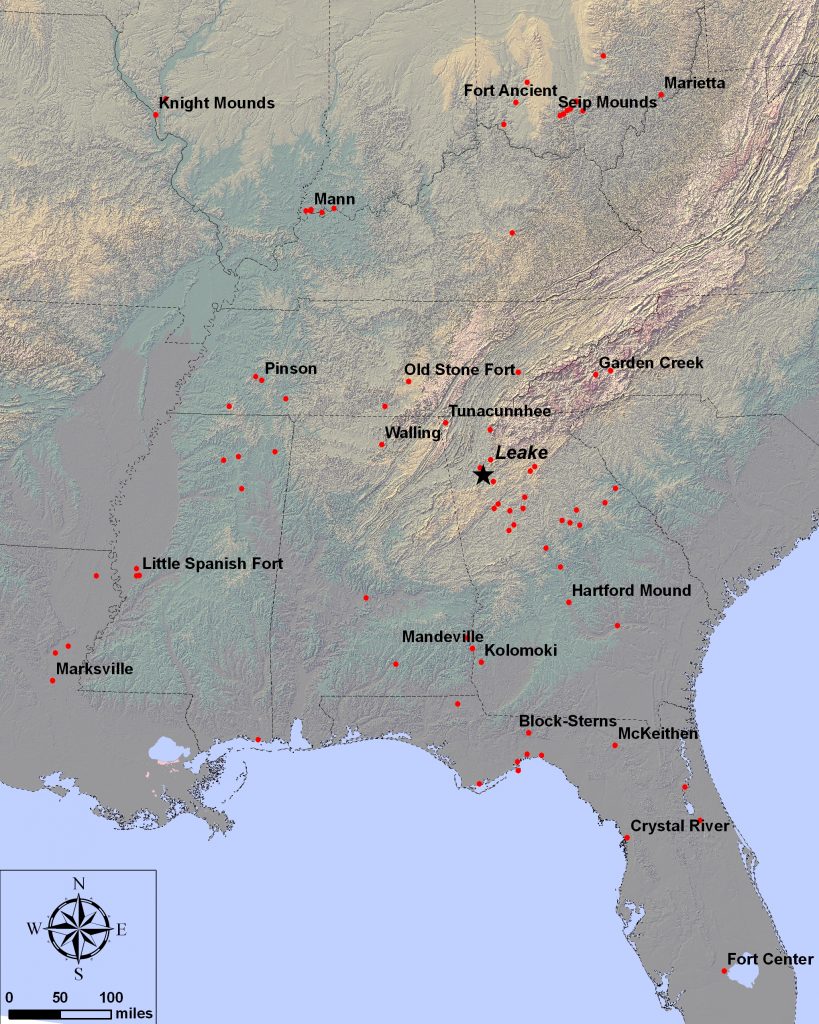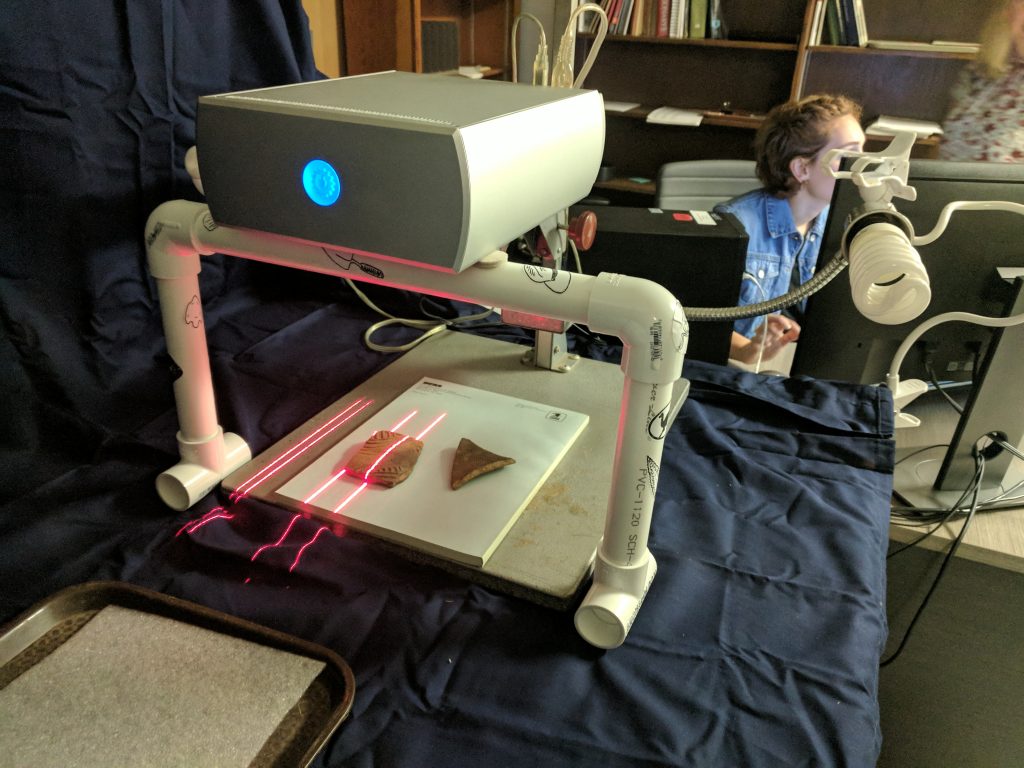Precontact Pottery
Prior to European arrival in North America, known as the Precontact era, Native Americans had been making and using pottery for thousands of years. This pottery was mainly used for cooking food and storage. It is likely that the invention of pottery happened independently in several places over time. The oldest known pottery in North America comes from an archaeological site along the Savannah River near Augusta, Georgia called Stallings Island. Stallings Island Pottery is unique for its age (it was made over 4,000 years ago!) and its natural fiber Temper. You can read more about Stallings Island here. Click here to read more about Stallings Island.
Pots come in many shapes and sizes. Some are plain, meaning they have no decorations, while others can be highly decorated with complex designs made in the clay or painted on the surface. Archaeologist use the variations in shape, decoration, and other attributes to sort pottery into different groups known as Types . Archaeologists have identified hundreds of different types of precontact pottery in Georgia based on attributes such as the location where they are found, temper, and decoration.
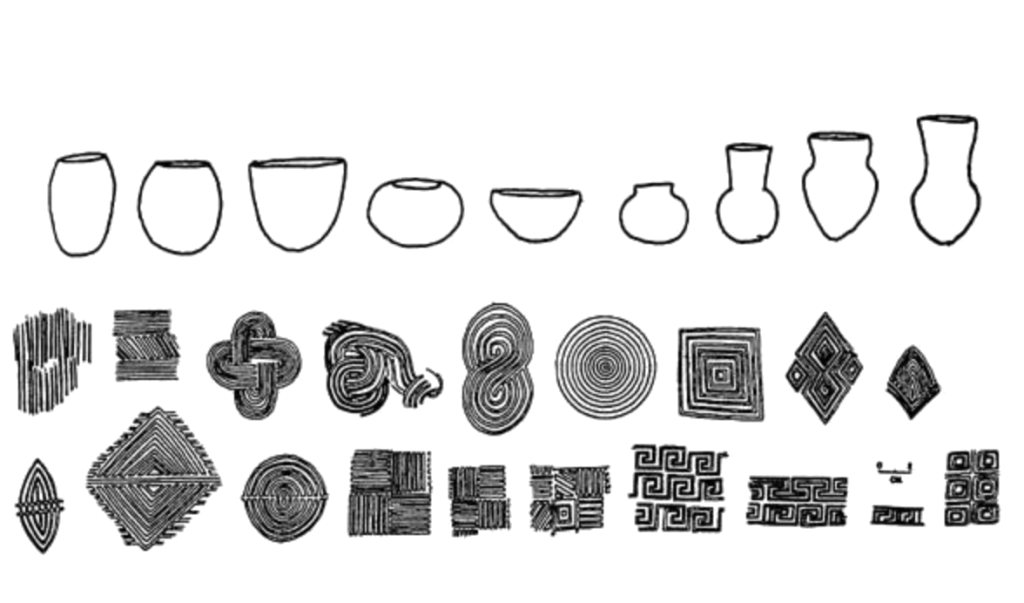
Because different types of pottery were made at different times, archaeologists can use pottery to construct chronologies of an archaeological site, make general assumptions about a site’s age, and make comparisons between different archaeological sites.
Some Precontact Pottery Terms used by Archaeologists
- Coil Built: The use of long strands of clay to build a pot by molding the coils into the desired shape. This is the method that was used in precontact pottery in North America.
- Decoration: The embellishments and designs on the surface of the pottery, usually the exterior surface. Pots can be decorated before they are fired or after. Decorative methods included paint, punctuations, incisions, stamping, fabric impressions, and many others.
- Firing: The process of heating soft clay to a very high temperature to harden it. Once fired, it is considered to be a ceramic.
- Pot: A vessel made from fired clay used for cooking and storage. Pots come in many different shapes and sizes.
- Sherd: A fragment of pottery that has broken off of a larger pot.
- Temper: Some material in the clay that makes the pot stronger. Temper helps to prevent cracking or breaking when the pottery is fired, and also makes the finished pot more durable. Temper can be naturally occurring in the clay or added to the clay when the pot is made. Tempers include natural fibers, sand, crushed rocks, shell, or other pieces of pottery called grog.
- Type: Pottery that shares similar style, attributes, and time period.
SnowVision Complicated Stamped Scanning Project
Archaeologists can use pottery to better understand the people of the past. How? Keep reading to see an example about how archaeologists are using the designs on pottery and technology to learn about past.
Pottery made during the Middle Woodland period, circa 50 – 700 A.D., was often stamped with intricate designs that were carved into wooden paddles. While archaeologists do not know exactly how many unique “complicated stamped” designs were created, nearly 1,000 have been identified so far.
Occasionally, archaeologists find sherds that have the identical stamped design at different sites. Identifying these design matches across different sites provides archaeologists with information on the cultural interactions and movements of the people who lived at or visited the different places where this pottery is found, helping to build a map of the social network of the makers and users of this pottery.
Traditionally, archaeologists have had to rely on the naked eye to identify design matches, with design analysis pioneers Frankie Snow and Bettye Broyles leading the way in design reconstruction beginning in the 1960s. Because pottery collections are housed at many different curation facilities across the Southeast, archaeologists doing this work often need to travel long distances and spend a lot of time searching through many boxes to look at sherds, create hand-drawings and rubbings of the designs for comparative purposes, and try to reconstruct complete designs from the sherds.
In recent years, archaeologists doing this type of “design analysis” recognized the potential of computer-aided design matching, such as is used in law enforcement to search for fingerprint matches, and so are now developing a computer application to identify matches in complicated stamped pottery designs. Named Snowvision after Frankie Snow, archaeologists upload 3D scans of sherds into the application, which then searches a database of reconstructed pottery designs to identify possible matches. While the application currently searches for matches using an existing design database, future development will also allow it to identify new designs that have not yet been recognized. Once development of Snowvision is complete, the application will be available as a free online tool for archaeologists and other researchers that will make the process of design matching much faster, more efficient, less costly, and less prone to error.

References
- Sassaman, Kenneth E. “Stallings Island Site.” New Georgia Encyclopedia. 08 June 2017. Web. 04 May 2020.
- Wauchope, Robert. “Archaeological Survey of Northern Georgia, with a Test of Some Cultural Hypotheses.” Society for American Archaeology, Memoir 21.
- Williams, Mark. “Indian Pottery.” New Georgia Encyclopedia. 08 June 2017. Web. 04 May 2020.
- Zhou, Jun, Haozhou Yu, Karen Y. Smith, Colin Wilder, and Song Wang 2017 “Identifying Designs from Incomplete, Fragmented Cultural Heritage Objects by Curve-Pattern Matching.” Journal of Electronic Imaging 26(1). DOI10.1117/1.JEI.26.1.011022.
Learn More
Here are some links to other sites on Precontact Pottery in Georgia:
- Leake Mounds Interpretive Trail
- UGA Pottery Site
- Bartow County’s Leake Site
- Ceramic Technology Lab Georgia Galleries
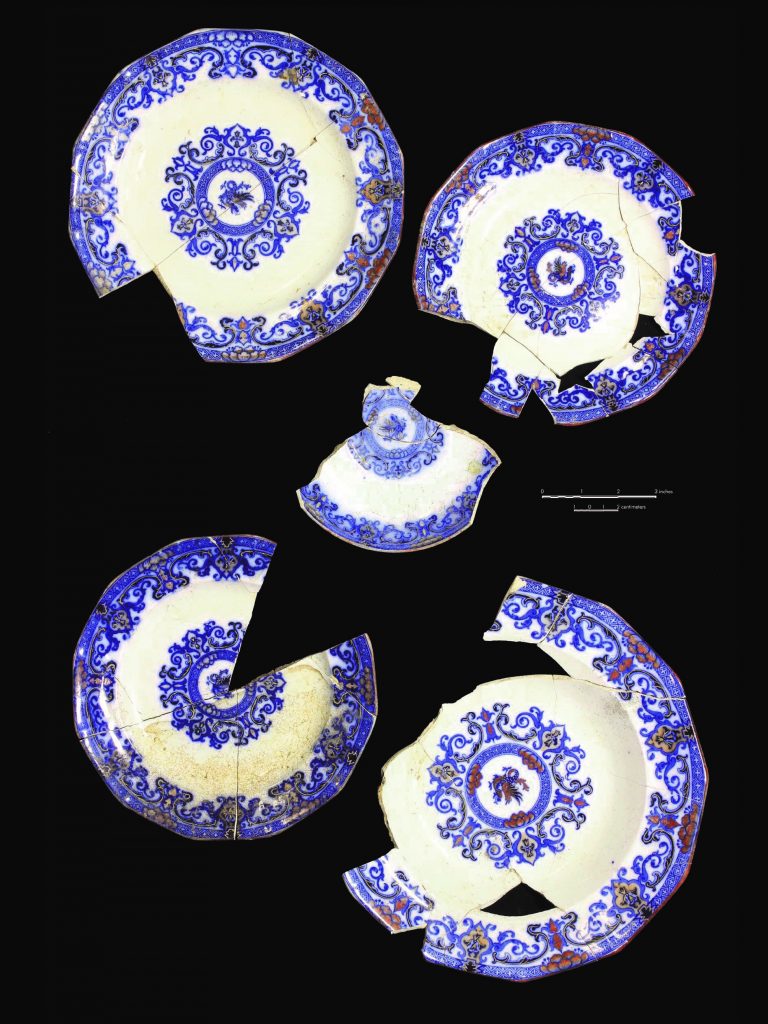
Historic Pottery
When Europeans arrived in North America, they introduced new types of pottery. These new pottery types can be classified based on three primary characteristics: paste, surface treatment, and decoration. Combinations of these three characteristics are used to define the various types of historic pottery. Archaeologists study historic pottery types to better understand the chronology of a site, the socioeconomic status of site inhabitants, the culinary traditions practiced by site inhabitants, and more.
- Paste: paste refers to the type of clay used to make the vessel.
- Surface Treatment: surface treatment refers to the type of treatment applied to the surface of the vessel, such as glazing.
- Decoration: decoration refers to the methods, colors, and motifs applied to the vessel for ornamental purposes.
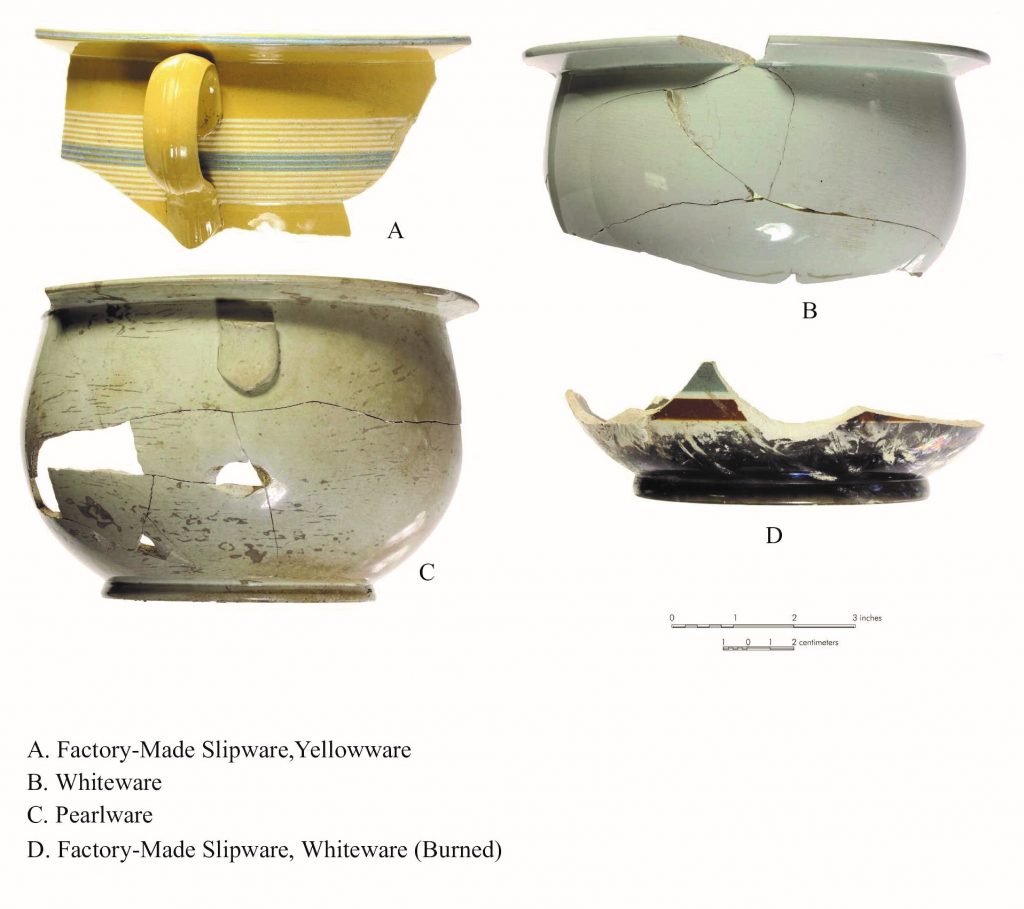
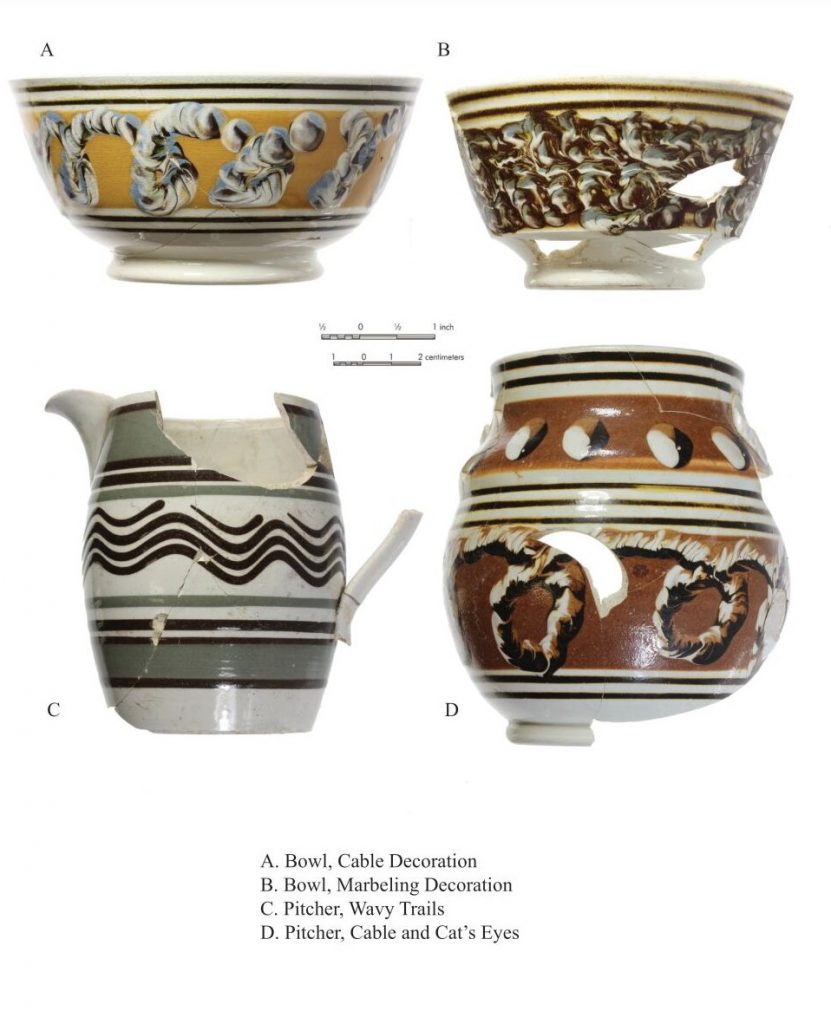
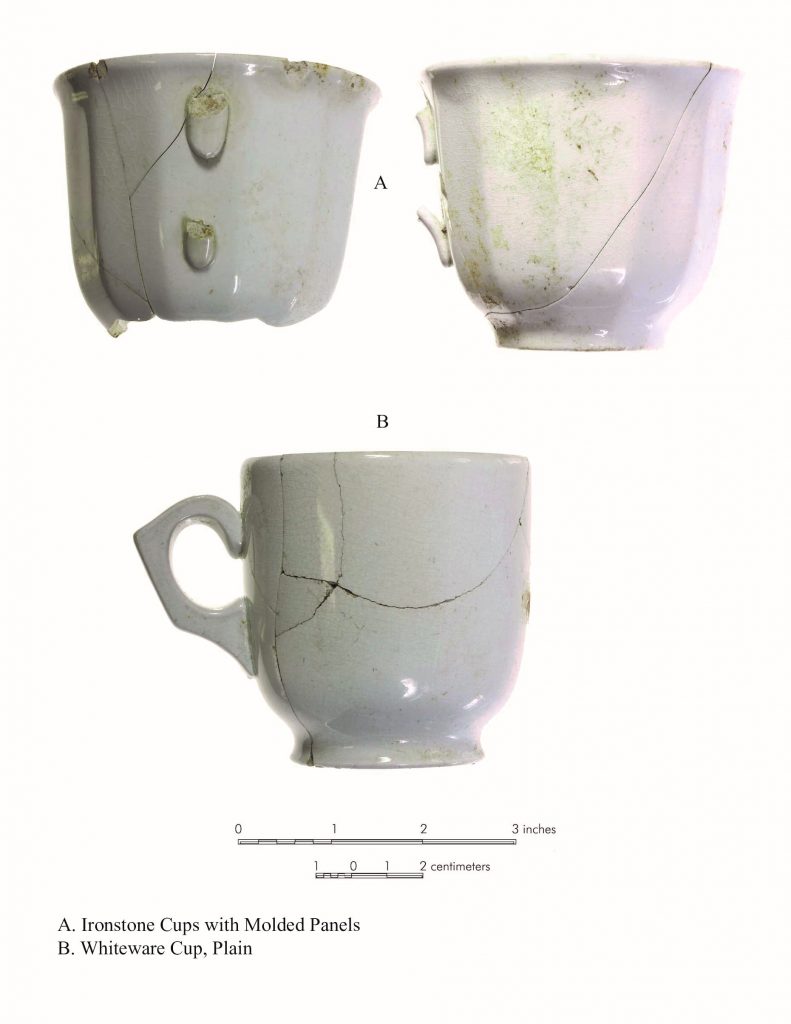
References
Barker, David and Teresita Majewski. “Ceramic Studies in Historical Archaeology.” The Cambridge Companion to Historical Archaeology (pp. 205-232). Cambridge University Press. 26 June 2006.
Florida Museum. “Introduction to Ceramic Identification”. https://www.floridamuseum.ufl.edu/histarch/ceramic-types/introduction/. 25 January 2019.
Activity:
Make Your Own Coil Pot at Home!*
Experimental Archaeologists learn how past peoples made things by using ancient technologies to reproduce their tools, pottery, weapons, clothing, ornaments, and structures. For this activity, you will become an experimental archaeologist by using one of three methods that Native Americans frequently used to make pottery before the invention of the pottery wheel. We do not have the exact types of clays and tempers (additives to strengthen clay); however, we can build pots using hand methods and compare the results for strength, durability, and appearance. Check out this video by New South and Georgia Public Broadcasting to learn how to make a coil pot using air-dry clay! There are also written instructions below, as well as a series of discussion questions to help you to explore this topic and test your knowledge about the history of pottery in Georgia.
Materials Needed
- Air-Dry Clay
- Decorating Tool (i.e. popsicle stick, toothpick)
- Wax paper
Instructions
- Working on your wax paper, take a lump of clay and separate it into several smaller lumps.
- Flatten one lump of clay to make a flat base of a container, perhaps 2-3 inches across and about 1/4 inch thick.
- Roll the other lumps into long snakes of equal thickness.
- Press the first snake on the edge of the base to make the first row of coiling. Each row of coils is pressed or pinched on to the row below it to bond them together. It is also possible to coil longer lengths of clay into a spiral coiling with the same pinching method.
- Use your decorating tools to add designs to your pot! Use your design to tell your own story.
- In 1-2 days your pot will harden. A smaller pot will take less time to harden than a larger pot.
*Modified from the Illinois State Museum’s Prehistoric Native American Lesson Plan: Pottery-making Methods
Discussion Questions
- Describe other methods of forming clay vessels that Native Americans might have used.
- Explain the purposes that pottery designs might have served. Were designs purely aesthetic (for looks only), did they convey a deeper meaning or serve a function?
- What can we learn about Native American groups by analyzing the designs and tempers used in their pottery?
- Do you think that designs were chosen based on personal experiences, religious beliefs, or something else? Explain.
- Do you think Native American pottery was made only for functional purposes? Can Native American pottery also be an art form? Discuss examples of functional art from different cultures and eras.
- Increased complexity in pottery designs reflects increased complexity in Native American cultures. Complexity in culture indicates a population increase, a surplus in food, and a stratified society. Why would pottery become more ornate in times of greater cultural complexity? Discuss the factors that might have influenced Native American potters to make more elaborate pots during such times.
- Why do you think pottery is such an informative artifact for archaeologists? What types of records does pottery have the ability to keep? Can the clay and tempering offer any insights? What about slight variations in designs?
Standards Connector:
| Grade Level | Standard | Description |
| Kindergarten | SSKG1 | Describe the diversity of American culture by explaining the customs and celebrations of various families and communities. |
| K-5 | VAK.CN1 | Investigate and discover the personal relationships of artists to community, culture, and the world through making and studying art. b. Recognize the unique contributions of contemporary and/or historical artists and art forms, including Georgia artists. c. Discuss art from a variety of eras and world cultures. |
| First | VA1.CR4 | Understand and apply media, techniques, and processes of three-dimensional art. b. Create works of art using clay techniques to create forms (e.g. modeling, rolling,pinching). c. Create three-dimensional composition using traditional and/or contemporary craftmaterials and methods (e.g. paper sculpture, found object assemblage, jewelry). |
| Second | SS2H2 | Describe the Georgia Creek and Cherokee cultures of the past in terms of tools, clothing, homes, ways of making a living, and accomplishments. |
| Third | SS3H1 | Describe early American Indian cultures and their development in North America. c. Discuss how American Indians continue to contribute to American life (e.g., arts, literature). |
| 9-12 | VAHSCR.RE.1 | Reflect on the context of personal works of art in relation to community, culture, and the world. b. Identify and reflect on how personal experience and diverse community and global cultures inform the art making process. |
| 9-12 | VAHSCR.CN.1 | Develop personal artistic voice through connecting uses of art within a variety of cultural, historical, and contemporary contexts. a. Discuss the intent of ceramic works in context to historical events. d. Investigate the role of ceramics as a visual record keeper. |
These standards of excellence were sourced from the Georgia Department of Education web page at https://www.georgiastandards.org/Georgia-Standards/Pages/default.aspx

